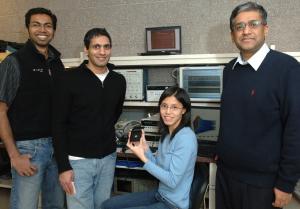
Charging the cell phones is a drag; and the battery drops out just when you need it most. Having a battery that would last 10 times as long wouldn’t solve every problem of that type but it definetly would be very helpful. Also, an energy-efficient chip would be very helpful in other cases, and this it is just around the corner. Researchers at MIT and Texas Instruments have such a chip design for portable electronics.
This brilliant and innovative design will be presented Feb. 5 at the International Solid-State Circuits Conference in San Francisco by Joyce Kwong. She carried out this project with help from MIT colleagues Anantha Chandrakasan, Joseph F., Nancy P, and graduate students Yogesh Ramadass and Naveen Verma, and her Professor of Electrical Engineering. The key of this chip was to find a way for the circuits to work at much lower voltages than usual, thus while most chips today work at 1 V, these circuits work at just 0.3 volts.
The thing is that lowering the voltage is nowhere near as easy as it sounds, because for years and years chips have been optimized in order to work at 1V;
“Memory and logic circuits have to be redesigned to operate at very low power supply voltages.[….] Designing the chip to minimize its vulnerability to such variations is a big part of our strategy” Chandrakasan says.
But they managed to find a way to work even in this condition, by building a high-efficiency DC-to-DC converter which reduces the voltage to the lower level-right on the same chip, reducing the number of separate components.
So far the concept sounds great and it could be applied to numerous portable devices from many fields, from cell phones to medical devices.
“Together, TI and MIT have pioneered many advances that lower power in electronic devices, and we are proud to be part of this revolutionary, world-class university research,” said Dr. Dennis Buss, chief scientist at Texas Instruments. “These design techniques show great potential for TI future low-power integrated circuit products and applications including wireless terminals, battery-operated instrumentation, sensor networks and medical electronics.”






